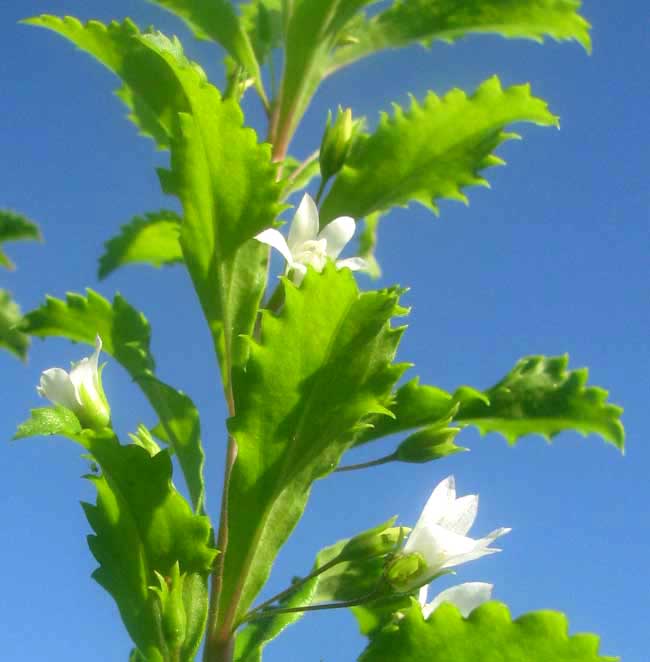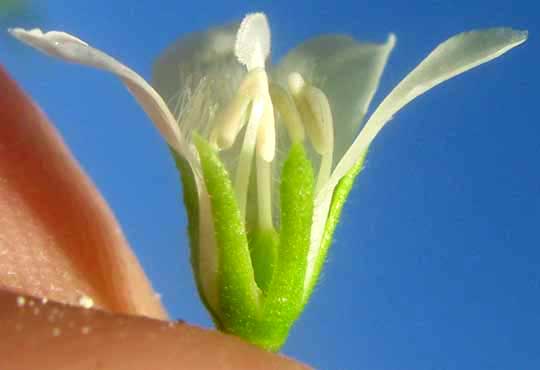Excerpts from Jim Conrad's
Naturalist Newsletter

from the April 17, 2011 Newsletter issued from Hacienda Chichen Resort beside Chichén Itzá Ruins, central Yucatán, MÉXICO; limestone bedrock, elevation ~39m (~128ft), ~N20.676°, ~W88.569°
GOATWEED BOTANY
The other day Newsletter reader Harald here in the Yucatán sent me a plant picture to identify, a plant that showed up in his garden unannounced, a species that had just begun flowering along our road, too. I didn't know it so I had to "do the botany on it" to figure out its name. You can see the knee-high plant's white, pea-sized flowers and saw-toothed-edged leaves at the top of this page.
A flower close-up with the nearest of five petals removed so we can better see the flower's five stamens and, at the bottom of the flower, a little green ovary topped with a long, slender style ending with a burry, egg-shaped stigma above the stamens' white anthers is shown below:

Certain field marks reveal this as a member of the Figwort or Snapdragon Family, the Scrophulariaceae. An important field mark is that the five-stamened flower is very slightly asymmetrical, with bilateral instead of radial symmetry. Also, the fruits are dry capsules that split to release many seeds, which is typical of the Figwort Family. Once I knew the family I checked the Flora of Quintana Roo, the Mexican state I'm in now, to see what species in that family are present here. The Flora of Quintana Roo is available online at http://www.ibiologia.unam.mx/BIBLIO68/fulltext/lfl2.html.
By doing an image-search on the Figwort Family species in Quintana Roo I didn't recognize, soon I came up with a match. Our plant is CAPRARIA BIFLORA, in English sometimes known as Goatweed. It occurs from southern Florida and southern Mexico through much of the Caribbean and Central America into South America.
Harald was tickled with the name because when he looked it up on the Internet he found that the plant often is considered medicinal, and Harald likes medicinal plants. A website on the island of Saint Lucia says that there a tea of Goatweed -- called Dité Peyi there -- is believed to help people adapt to severe changes of weather. A tea made of a small branch is drunk three times a day for gas. Another website, in Mexico, which calls it by its Maya name Chokuilxim, says that it's good for "matrix bleeding and white refluxes," whatever they are, and acne.